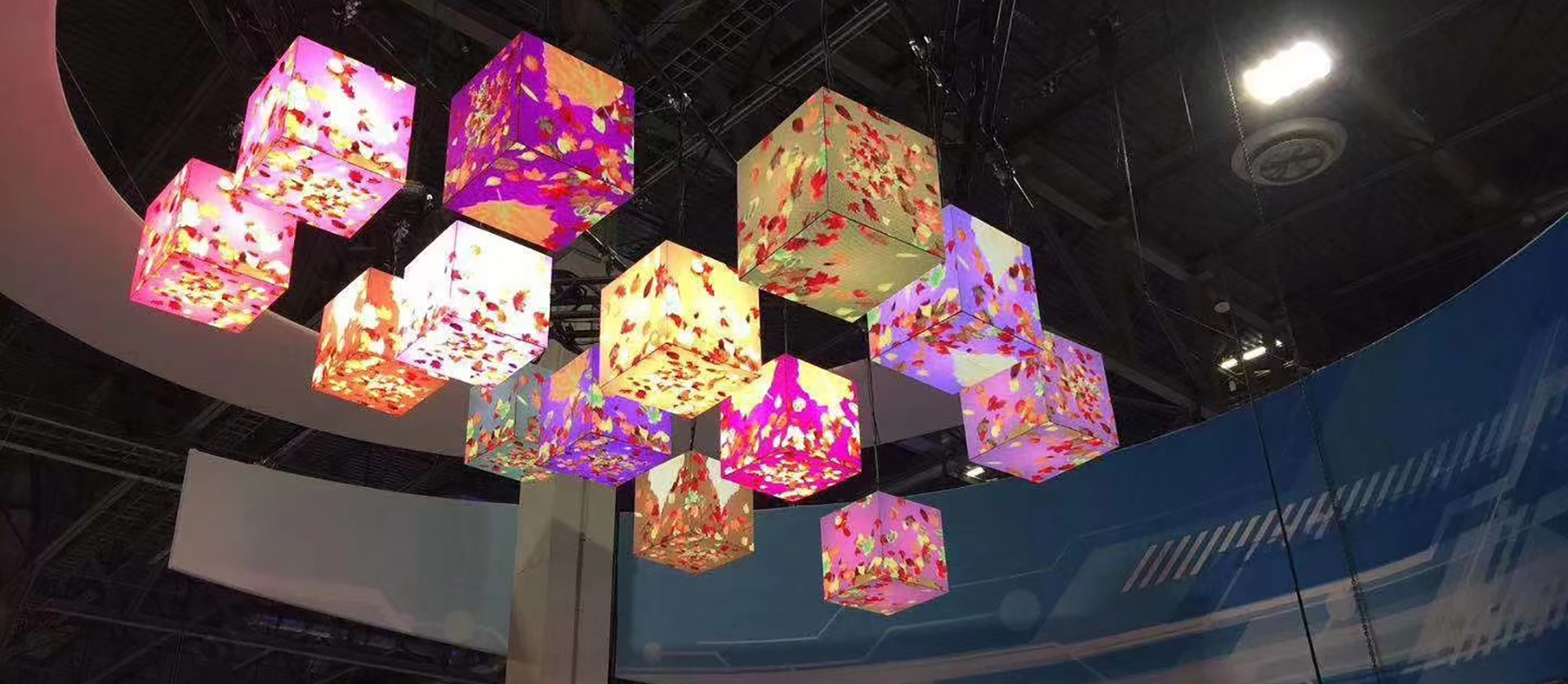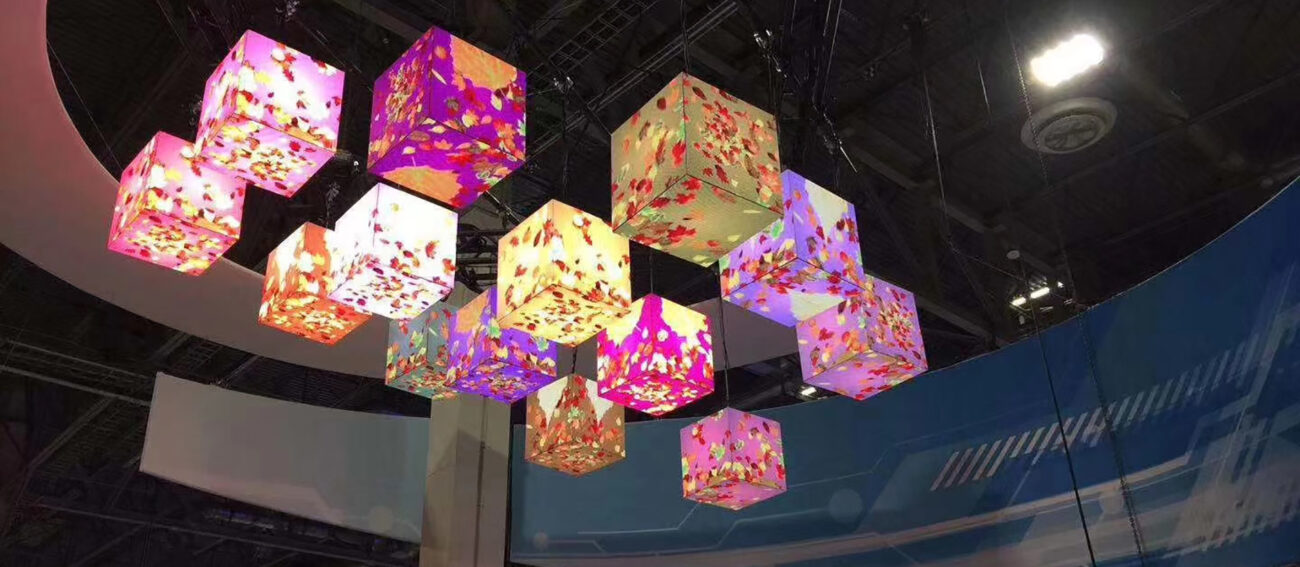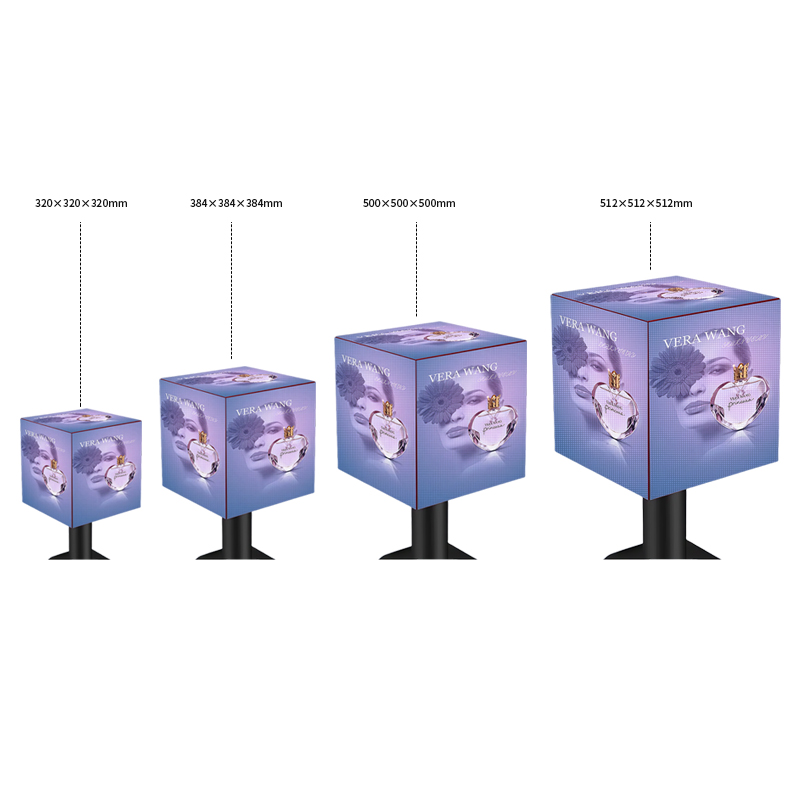В развивающемся мире цифровых медиа, аудитория больше не удовлетворена плоскими, двумерные визуальные эффекты. Они жаждут глубины, погружение, and interaction. This shift has paved the way for Светодиодные дисплеи «волшебный куб»—a technology that blends optical illusion, 3D projection, and digital art into one captivating experience. Through an intricate balance of geometry, transparency, and motion, these displays transform ordinary visuals into floating, volumetric spectacles that seem to defy physics.
A New Chapter in Display Technology
Traditional LED displays rely on flat panels to project light forward. While effective for signage and video walls, they lack spatial engagement. А magic cube LED display, however, revolutionizes this concept. Using transparent LED panels arranged in a cube formation allows viewers to perceive depth and motion in three dimensions. The result is a 3D illusion LED display that appears to suspend digital content mid-air, viewable from multiple angles.
What distinguishes this display is not just its structure but also its synchronization precision. Each surface of the cube projects complementary visuals that merge seamlessly in space. When the viewer moves, parallax effects enhance the sense of floating realism. This fusion of optics and perspective is what transforms a holographic LED cube from mere novelty to a genuine storytelling medium.
The Science Behind the Floating Illusion
The visual magic begins with the principle of volumetric perception. Unlike flat screens that emit uniform brightness, a magic cube LED display distributes light through partially transparent diodes embedded in glass or acrylic panels. These diodes can emit controlled luminosity at precise coordinates, allowing digital imagery to “float” within the cube.
To enhance the illusion, advanced rendering software divides video frames into spatial layers. Each layer corresponds to a physical depth level inside the cube, enabling the display to mimic the refraction and occlusion patterns that occur in real 3D space. The combination of optical illusion display design and computational imaging tricks the human brain into perceiving holographic motion without specialized glasses or headsets.
Engineering Precision: The Core of Visual Realism
At the heart of this system lies engineering accuracy. Every magic cube LED display requires millimeter-level alignment to maintain depth consistency. A single deviation in LED calibration can disrupt the 3D illusion, creating ghosting or visual blur. To counter this, manufacturers integrate high-precision mounting structures and AI-assisted calibration tools that analyze pixel distribution across each face of the cube.
Moreover, frame synchronization between cube surfaces ensures that motion transitions appear fluid. The rendering engine must process high-frame-rate video streams in perfect harmony with the cube’s geometry. This technological rigor transforms the hardware from a simple display into a true volumetric projection environment.
Applications Beyond Entertainment
While the technology first gained traction in entertainment venues and art installations, its commercial applications are rapidly expanding. Luxury retail brands use holographic LED cubes to display rotating products, merging digital storytelling with tangible merchandising. Architectural firms integrate 3D illusion LED displays into lobby designs to express brand identity through kinetic art.
In museums and science centers, the same technology visualizes complex data sets—like molecular structures, planetary systems, or urban planning models—allowing visitors to experience depth and motion that static exhibits cannot achieve. Across all these scenarios, Светодиодные дисплеи «волшебный куб» offer the rare ability to engage emotion and intellect simultaneously.
The Psychology of Immersion
The effectiveness of a magic cube LED display is not just technical—it’s psychological. Human vision evolved to detect depth cues like shadows, parallax, and occlusion. By replicating these cues digitally, cube displays leverage natural perception mechanisms. As viewers move around the installation, their perspective changes dynamically, reinforcing the illusion of genuine spatial depth.
Более того, the transparent structure eliminates the boundary between the viewer and the content. This openness invites participation rather than passive observation, making optical illusion displays ideal for interactive marketing and immersive storytelling.
Sustainability and Smart Control Systems
Beyond aesthetics, sustainability is a growing priority. Modern Светодиодные дисплеи «волшебный куб» employ energy-efficient micro-LED diodes, reducing power consumption by up to 40% compared to conventional panels. These systems also feature smart dimming and automatic temperature control, optimizing brightness according to ambient light conditions.
Networked control platforms allow remote monitoring and content scheduling. Operators can synchronize multiple cubes across different locations, updating visual campaigns in real time. This fusion of IoT integration and digital signage makes them not just visually futuristic but operationally intelligent.
Challenges in Manufacturing and Deployment
Despite their visual appeal, Светодиодные дисплеи «волшебный куб» demand careful handling during production. Transparent substrates require cleanroom assembly to prevent dust contamination that might scatter light. Moreover, cube structures must withstand both thermal expansion and vibration while maintaining precise alignment.
In terms of deployment, environmental factors like glare, humidity, and background lighting affect performance. Therefore, successful installation involves comprehensive site analysis and custom calibration. As production costs gradually decrease, more commercial spaces and event organizers are adopting this technology, bringing 3D illusion art to mainstream audiences.
Shaping the Future of Visual Communication
The rise of Светодиодные дисплеи «волшебный куб» symbolizes a broader evolution in visual media—from flat information delivery to spatial storytelling. Just as early LED billboards redefined outdoor advertising, 3D illusion systems are now transforming how brands and institutions communicate.
By merging form, physics, and emotion, these displays bridge the gap between digital imagination and physical experience. Whether used for brand showcases, architectural design, or immersive art, their ability to visualize content as if it were truly floating reshapes how humans perceive space.
Conclusion: Redefining the Boundaries of Light and Space
А magic cube LED display represents more than a visual device—it’s a medium of dimensional expression. By combining transparent engineering, optical precision, and creative vision, it blurs the line between technology and art. Его floating 3D illusion invites audiences to explore light as a living sculpture, one that reacts to perspective and movement.
As innovation continues, these systems will only grow more sophisticated—integrating AI-driven visuals, motion tracking, and interactive projection mapping. In essence, Светодиодные дисплеи «волшебный куб» are not just part of the display industry’s future; they are shaping the next chapter of spatial storytelling where imagination, geometry, and light converge into one seamless experience.





